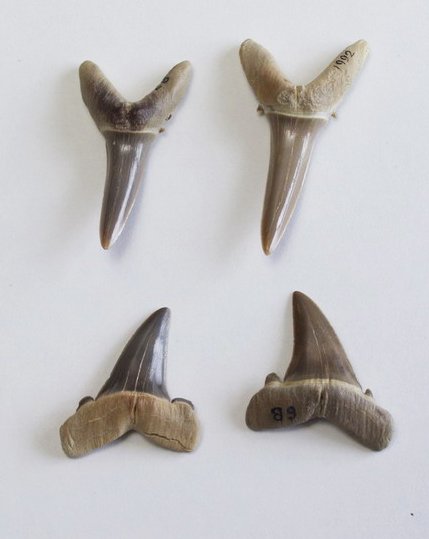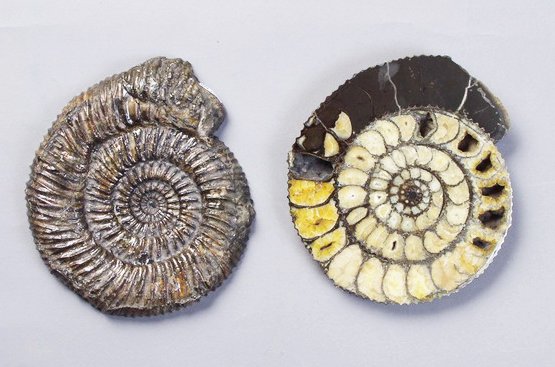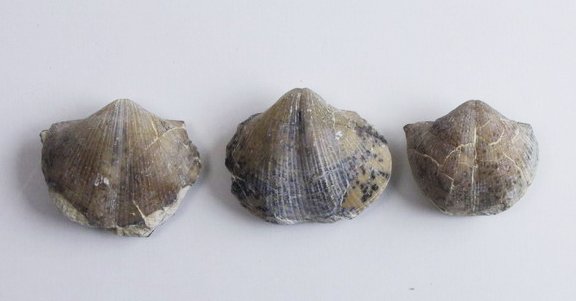Paleontology collection
Curator: Yaroslav
Popov.
19 216 specimens.
The collection is being formed since the 1970s and comprises mainly the
materials collected by famous researchers and collectors.
The first specimens
were purchased by Alexander Kohts abroad in the early 20th century,
such as the so-called “lithographic limestone” with imprints of aquatic
arthropods from Solnhofen - the world-famous location of the Late Jurassic
fauna in the German state of Bavaria. These samples are also the oldest among
Darwin museum's specimens according to the time they were collected, dating back
to 1876.
The collection
contains extensive material from the Paleozoic deposits of the Moscow Region (stratotypes
of some stages), the Leningrad Region, the central regions of European Russia,
the Devonian of the Voronezh Region, the Mesozoic Era of the Moscow Region, the
Volga Region, the Mangyshlak Peninsula, and the Crimean Peninsula, the Paleogene
of Ukraine and Crimea, the Lower Paleozoic of the Baltic and Siberia, the
Paleozoic Era and the Triassic of Siberia.
The collection contains all the
major groups of the organic world, including:
- The remains of Cyanobacteria, lycophytes,
Equisetidae, the Auchenorrhyncha, Ginkgoales, Cordaitales, Coniferophyta, Angiospermae.
The specimens of plants with preserved cell structure are extremely
interesting.
- Foraminifera
- Fusulinida and nummulite, sponges, the annelids, Echinoidea are widely
represented.
- Archaeocyatha,
Hydrozoa, jellyfish, Entomostraca, crabs, insects (including inclusions in
amber), starfish, Graptolithina.
- A great
variety of corals, trilobites, Crinoids, among which the most interesting are
the specimens from the coal deposits of the Moscow Region, gastropods and
bivalves (Paleozoic, Mesozoic, and mainly Cenozoic), cephalopods, including
rather rare Paleozoic nautilides.
- Vertebrates
are represented by a few, usually fragmented, bone remains of fish, reptiles,
and mammals. The most notable are the remains of fish from the sites in
Germany, the USA, and Russia, amphibians from Moravia (Czech Republic), reptiles
from the Moscow region and Mongolia.
- A small
osteological collection of the mammoth fauna (bones of a
woolly rhinoceros, horse, steppe bison, mammoth) formed thanks to the
materials of K.K. Flerov, E.N. Mashchenko, V.V. Mitta.
- Of
particular value is the collection of aberrant whole and fragmentary tusks of a
woolly mammoth, showing rare forms of growth abnormalities.
- Some of the paleobotanical
materials are of the most interest like the remains of little-known lycophytes,
ferns, and Coniferophyta from the bordering deposits of the Permian and
Triassic systems of the north of Siberia. Sometimes the specimens have been preserved
so well that it is possible to study the cellular structure of the plant remains.
Currently, the collection is actively replenished by the efforts of the museum staff G.N. Sadovnikova, Y.A. Popova, and E.V. Mychko.

Teeth of a
fossil shark (Striatolamia usakensis Glickman) from the Glickman’s collection
of the fossil cartilaginous fishes, the State Darwin Museum

Ammonoid (Simbirskites sp.)

Brachiopods (Choristites sp.)









